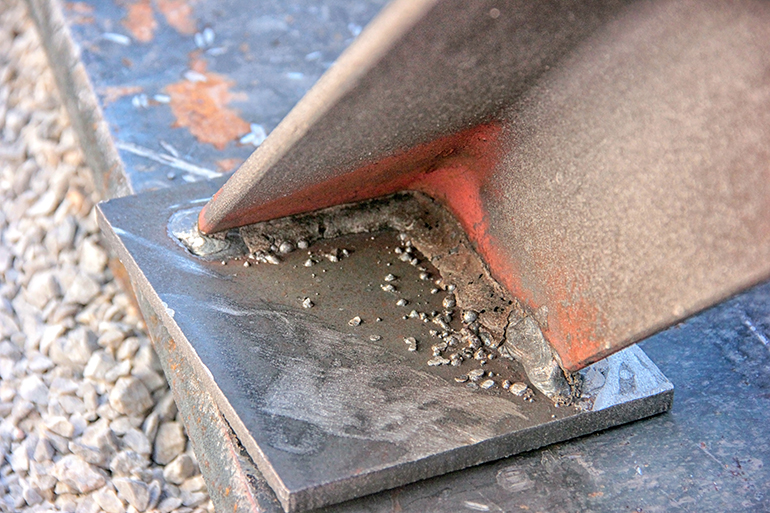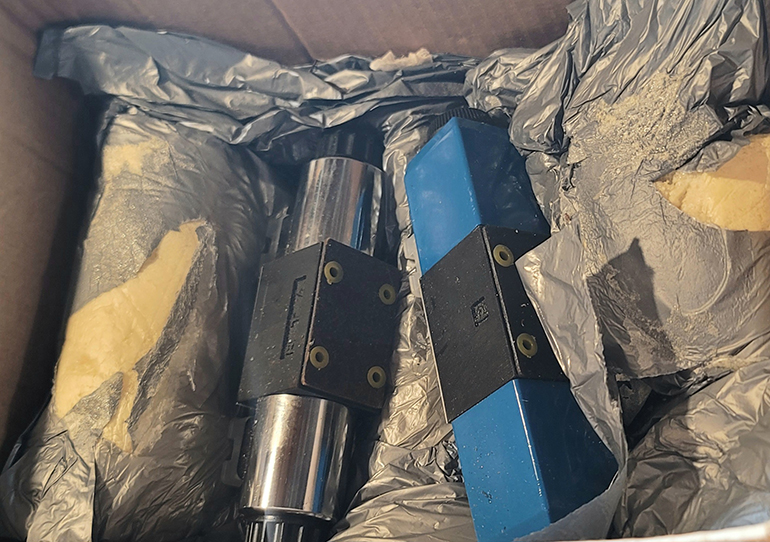By Josh Cosford, Contributing Editor
When I sat in my first fluid power class 18 years ago, I remember learning about built-in contamination and how the reservoir was the biggest offender. The welds and their slag were the biggest problems, the teacher stated, but a close second was the debris from pipe threading machines. Looking back, it’s clear those two sources should be top-of-mind when building a hydraulic power unit and subsequently assembling the rest of the circuit. However, it might be more precise to consider what stages of hydraulic machine fabrication the built-in contamination comes.
For example, the manufacturing stage for each subcomponent of your hydraulic circuit may birth its own form of built-in contamination. There is the weld spatter, slag and spatter balls that must be accounted for when fabricating hydraulic reservoirs, but remember that every other component was also manufactured. Pumps, valves, cylinders and motors come from factories where casting, forgings or billets are machined to their final shapes, and those processes create chips and particles detrimental to the longevity of those very same components.

You might be shocked to know that freight and packaging can add contamination to your hydraulic parts after they’re manufactured. Rust inhibitors or protective coatings will not likely harm anything in your hydraulic system, but packaging certainly can. Some heavy items, such as pumps, might be packed in Styrofoam, which could potentially enter the circuit where it easily clogs some pilot lines. And the port plugs installed prior to painting are prone to flaking, allowing the paint chips to enter open ports.
Even as pumps, valves and cylinders are assembled, ancillary parts such as Teflon tape, seals, and O-rings may pinch, extrude or come loose, entering the circuit and causing possible headaches. Every assembly technician has accidentally pinched a cartridge valve or cylinder piston seal during installation, and bits may break off without notice, clogging passages or pilot lines.

Fabrication and installation are likely the biggest offenders to contamination standards. Welding brackets, supports, and drip trays create all the same issues as manufacturing reservoirs, plus threading pipe or cutting hoses certainly spew forth metal chips and dust that are not suitable for anything on this side of a log splitter. And in many machine assembly shops, you may experience airborne dust, paint particles or various forms of fallout from nearby factories.
We land on the final form of build-in contamination, which is both a boon and a bane on your hydraulic system. When many of the above built-in contaminants find themselves inside your hydraulic machine prior to startup, you may want to rinse and flush the system prior to final startup. However, in some cases, you may need to rinse the residual flushing fluid prior to machine startup.
If your machine is particularly contamination-sensitive, even a minute amount of dirt-laden flushing fluid could damage expensive and precise components. In this case, it’s recommended you fill your machine with oil and circulate the system through an offline filter at very low pressure to carry about the last of the fluid and particles.
Filed Under: Components Oil Coolers, Contamination Control, Engineering Basics, Featured, Filtration/Contamination Control, Fluids, Sealing & Contamination Control Tips, Technologies